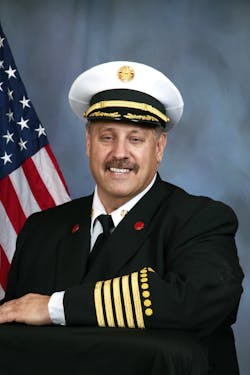Are we doing a disservice to those whom we recruit to be a part of the fire service? Are fire departments being truthful when they advertise that they are hiring firefighters, and every recruiting poster, website and other marketing tool shows firefighters battling a large conflagration?
Bait and switch?
I visited a large city in Texas last year and had a chance to talk with some firefighters in different stations. During my time with them, I heard the same theme over and over: They felt that they were recruited to fight fire but they were running mostly medical calls.
One firefighter told me of the huge billboards around town showing firefighters fighting a large building fire that almost looked like it could have been a scene from a movie, considering all the special pyrotechnics. The billboard said, “Become a Firefighter,” with information about how to submit an application.
Other firefighters echoed the same experience. Once they completed fire school, some were sent to EMT school and others to paramedic school. Many said they do not mind running the medical calls and acknowledge that it is a part of the job; however, they said when they were recruited, they were left with the clear impression that they would be fighting many more fires than has been the case. They felt they had been part of a “bait and switch.”
Data tells the story
The reality is that each year, fire calls continue to decrease and medical calls continue to increase. Go to the U.S. Fire Administration (USFA) website and you’ll find statistics showing that from 2005 until 2014, fires decreased 22.7 percent, deaths were down 11.7 percent, injuries decreased 7.9 percent, and dollar loss from fires was down 21 percent.
National Fire Protection Association (NFPA) data going back to 1985 is even more staggering. In a report titled, “Trends and Patterns of U.S. Fire Losses,” NFPA data shows there were 2.4 million fires in 1985 and 1.3 million fires in 2015. That is a 45 percent decrease in fires over 30 years. NFPA data shows that during the same period, medical calls increased from 6.5 million in 1985 up to 21.5 million in 2015. This equates to a whopping 230 percent increase in medical calls. One of the highlights from the NFPA report is that only 4 percent of all fire department responses in 2015 were to fires. So from my vantage point, it seems accurate to say that most fire departments pump more oxygen than water.
Some reading this may interpret the data to mean that we should have fewer stations, apparatus, and personnel because there are fewer fires to fight, but that is not the case. Even with fewer fires, nothing diminishes the fact that a force needs to be ready to fight any fire that may occur. Stations, apparatus and personnel should be based upon the risk to the community—not the number of fires. Even validating the need for more stations, apparatus and personnel is data from the same NFPA report that shows, despite the decline in reported fires, fire department responses have nearly tripled from 11.8 million incidents in 1985 to 33.6 million incidents in 2015 because of the increase in medical calls, sprinkler alarms, fire alarms, and other types of response related to hazardous materials and technical rescues.
For those fire departments that do transport with ambulances, they should look at increasing the number of ambulances and personnel because of the tremendous demand for EMS in some communities. Even with those fire departments that are engaged in Mobile Integrated Healthcare solutions to try and decrease the call load, many larger communities with lower poverty levels still find themselves slammed on any given day.
Be truthful
The truth in advertising when recruiting for new firefighters is that most fire departments do pump more oxygen than water. Most fire departments really are EMS agencies that sometimes go to a fire call. Human resource departments that try to attract firefighter candidates should accurately describe the role of a firefighter if they are hired. The bottom line: The firefighter of 2017 and into the future is a medical professional who sometimes fights fire.






